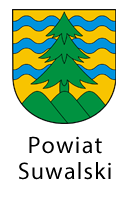Strona główna » Archaeological heritage sites
Table of contents
Selected archaeological sites of cultural heritage – included in the register of Podlaskie Voivodship's archaeological sites – register C
The history of human activity in the area of Suwalszczyzna begins in the Stone Age when it was inhabited by small groups of hunter-gatherers. Organized settlement developed here only at the end of the Bronze Age and the turn of the Bronze Age and the Iron Age. Agricultural communities in that period lived in open colonies, seeking shelter in defensive settlements, situated on hills, in times of danger. The most robust development in the area took place in the 2nd-4th centuries AD, when they were populated by groups of the Sudovian Culture people. That community lived in open settlements. They buried their dead with costly offerings in grave-mounds. In the 9th century AD the Yatvings arrived. They built powerful strongholds and were rich due to their war expeditions to the areas of their Christian neighbours.
Góra Zamkowa (The Castle Hill) Hillfort in Szurpiły
Góra Zamkowa became first inhabited at the turn of the 7th and the 6th centuries BC, in the Bronze Age. A fortified settlement was built here, surrounded with a wooden fence or palisade. In the 2nd-4th centuries AD Góra Zamkowa was home to a new, elitist community. At the end of the 9th or at the beginning of the 10th century AD warlike Yatvings arrived here. They built a fort on Góra Zamkowa, which was surrounded with two or three lines of defensive walls. Relics of their cremated bodies were discovered in the soil of the slopes of the hill. War damages in the middle of the 11th century AD made the Yatvings reconstruct their stronghold. It was made stronger with new lines of massive ramparts, made of wood, stones and earth, and equipped with massive towers and wooden gates. In 11th-13th centuries AD the Góra Zamkowa hillfort was further rebuilt several times.
Góra Kościelna (The Church Hill) Hillfort in Szurpiły
The earliest traces of settlement related to the Church Hill come from the Migration Period but it remains unknown what purposes it served. At the time a settlement already existed at the foot of the hill. From the moment of the arrival of the Yatving settlers, in the early Middle Ages, the hill became a part of the defensive system of the Szurpiły settlement. The hill top was fortified, perhaps with a defensive and observation tower. The latest archaeological research did not confirm the previous surmises about the existence of relics of a small church or a hillfort here. What remains at the Western foot of the Church Hill is a remnant of a rampart from the early Meddle Ages, which was presumably a basis for abattises and guarded the entrance to the Góra Zamkowa hillfort.
Targowisko Settlement in Szurpiły
The first human groups inhabited this hill in the Stone Age. A community of hunter-gatherers had its camps here. Next relics of human activity come from the 7th-6th centuries BC. An open settlement existed at Targowisko at that time, rather small, contemporary to the fortified settlement on Góra Zamkowa. Little is known about its structure and buildings, because the remnants of it were totally removed in the early Middle Ages when a new settlement was built. We also have very limited knowledge, for the same reason, about the settlement in the 1st-6th centuries AD. The Targowisko hill area was fully used only later by the Yatvings. There existed a large, fortified settlement here in the 10th-11th centuries AD. A fortified ancillary settlement was built here later, in the 12th-13th centuries AD, with a regular network of wooden streets and buildings.
The Pilekalnis Hillfort in Jegliniec
On the very top of a hill bearing a local name Pilekalnis there is an archaeological site. In the early Middle Ages there existed a fort here, built on the remnants of a settlement from the early Iron Age and the times of the influence of the Roman Empire. The first stronghold, protected by at least two lines of defensive walls, was built by the Yatvings in the 10th century AD. There were discovered signs of a Ruthenian invasion in the 11th century AD. The current look of the site is a result of a reconstruction in the 12th-13th centuries AD. The fort’s yard is oval in shape, surrounded by powerful ramparts. It consists of two parts divided by a sort of wall or rampart, which is lower in its Northern part and higher in the Southern one. Signs of additional fortifications remain at the foot of the stronghold. In the yard of the fort there was probably a pre-Christian shrine.
A Hillfort and a Settlement in Osinki
Osinki settlement complex consists of two main sites – a fort (site 1) and a settlement (site 1a). First signs of organized settling at this place come from the end of the 2nd century AD when a settlement of the Sudovian Culture came into existence. They were the people who buried their dead for example in a cemetery in Szwajcaria. That community also made use of the fort hill but it probably did not play a defensive role at the time. The aforementioned settlement with its buildings, domestic structures and production places existed, presumably with some interruptions, to the 4th or the 5th century AD. It was abandoned after that time. The next human activity took place here as late as in the 10th-13th centuries when the Yatvings built a fort and a watch-tower, surrounding it with several lines of powerful ramparts.
The Gulberek Hillfort in Sudawskie
There is an archaeological site on the hill that is called Gulberek by local population. It is of a shape of a truncated cone, surrounded by two lines of ramparts, of which rather little remains nowadays. The yard is 18,5 metres in diameter on the North-South axis and 17,5 metres on the East-West one. Due to a lack of archaeological excavations, one may only suppose that in the 7th-1st centuries BC there was a fortified settlement here, surrounded with a wooden fence or palisade. Its remnants visible today belong probably to a fort from the early Medieval period, which was built by the Yatvings in the 10th or the 11th century AD. Its two lines of ramparts were possibly made of wood and earth used interspersingly. There was a borough nearby. The name of the village Sudawskie might be a relic of the name Sudovia given to Jaćwież (Yatvingia) by the Teutonic Order.
A Necropolis in Osowa
A necropolis in the village of Osowa along with a colony are a settlement complex situated on an extensive plateau, surrounded from all sides by wet soil of the Czarna Hańcza old river bed. The place was used by a community of the Sudovian Culture. The necropolis consists of 123 grave-mounds, containing 205 skeletal and cremation graves and one grave of a horse. The people of the settlement buried their dead here since the end of the 2nd century AD to the 4th-5th centuries A.D. People buried in Osowa, like those buried in Szwajcaria necropolis, came from the areas of today’s Masuria, Lithuania and even Scandinavia. Costly objects placed in the graves represent various regions of the then ‘barbaric’ world. Important parts of the local community’s economy were land cultivation and animal husbandry.
Grave-mounds in Garbas I
A Sudovian Culture cemetery is situated on an extensive moraine ridge that spreads along the shores of Lake Garbas. Along with nearby settlements, it forms a settlement complex which is dated to the Migration Period. The necropolis consists of large family grave-mounds, made of stone and earth, and containing numerous graves each. Cremated bodies of the dead were put in clay cinerary urns. Two tombs from the site underwent examination. A single grave-mound might have contained even up to 20 cinerary urns. The graves were not richly equipped in articles. Only small things made of bronze were found there. The Sudovian Culture population used the cemetery in the 4th-7th centuries AD. Not far from the site, archaeologists discovered also other cemetery from that time.
Grave-mounds of Szwajcaria
In Szwajcaria exists a necropolis of the Sudovian Culture people, with grave-mounds and flat graves from the period of the influences of the Roman Empire. Their dead were buried here over the period of 250 years. People buried here came from the areas of today’s Masuria, Lithuania and even Scandinavia. The first graves are dated to the end of the 2nd century AD. They were mostly skeletal graves at that time (bodies were not cremated). Since the 3rd century AD there appeared graves of elitist cavalry men (probably chiefs) in the necropolis. The relics of the dead, both cremated and not cremated, were put within grave-mounds, sometimes together with horses. Costly articles put in the graves came from various parts of the then ‘barbaric’ world. In the 5th century AD, during the Migration Period, the necropolis ceased to be used any more. The necropolis in Szwajcaria (which is now a part of Suwałki town) is often mistakenly associated with the Yatvings.
Góra Różańcowa – A Fortified Settlement in Żubronajcie
A hill by Lake Żubrowo, called Góra Różańcowa (the Rosary Hill), was home to a settlement complex in the early Iron Age. The centre of it was a fortified settlement situated at the highest part of the hill. Nearby, two colonies were formed, where evidence of production in the fields of metallurgy, horn-tooling and pottery was found. The local community cultivated land and pursued animal husbandry. Presumably, in times of danger the fortified settlement offered shelter to people who lived in the aforementioned colonies. The settlement was intensively developing at this place in the 5th-2nd centuries BC. Archaeologists discovered on Góra Różańcowa traces of some human activity dating also to a later period (1st-5th centuries AD).
Compiled by Marcin Engel, Ph.D.

